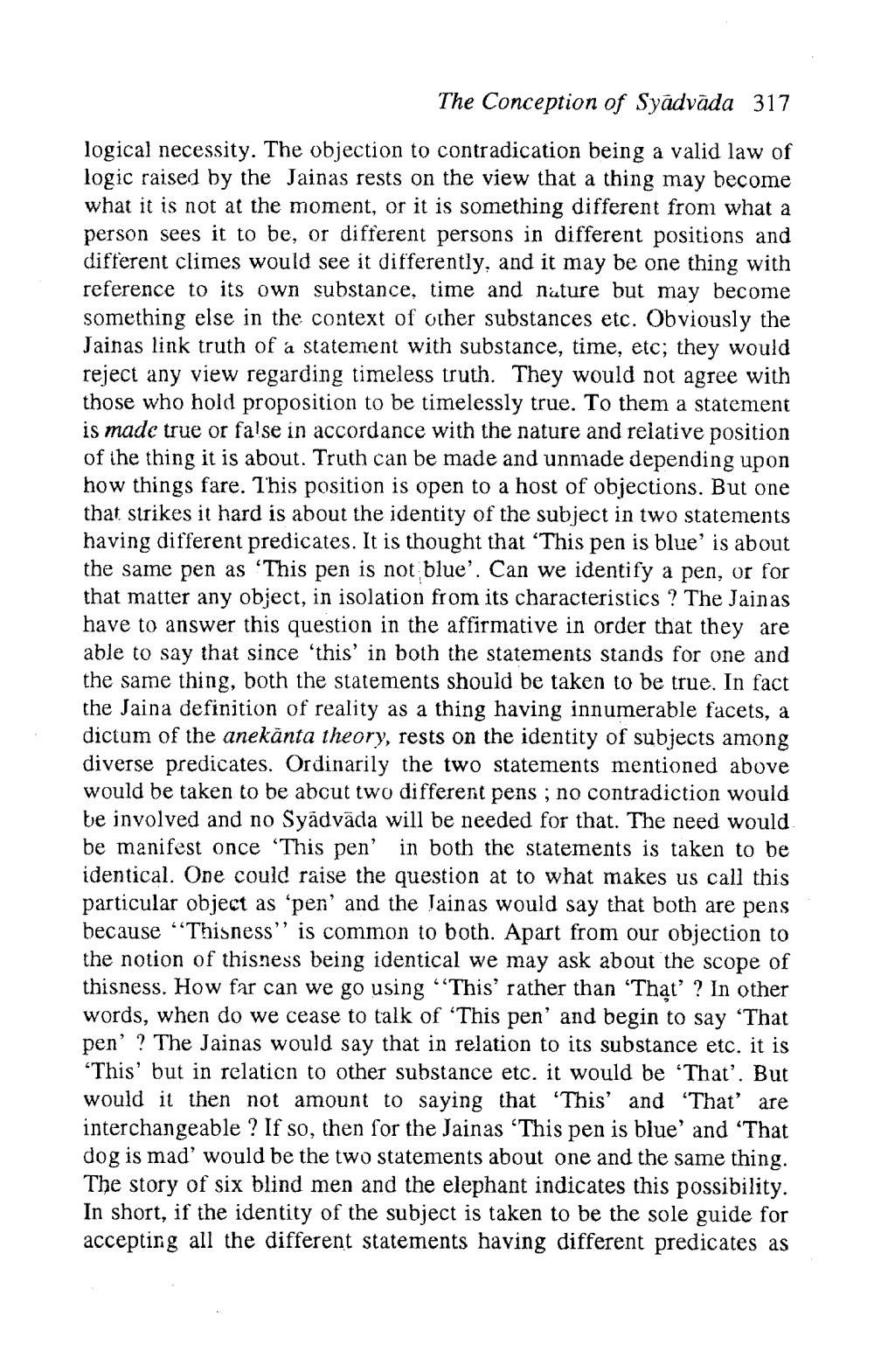________________
The Conception of Syādvāda 317
logical necessity. The objection to contradication being a valid law of logic raised by the Jainas rests on the view that a thing may become what it is not at the moment, or it is something different from what a person sees it to be, or different persons in different positions and different climes would see it differently, and it may be one thing with reference to its own substance, time and nature but may become something else in the context of other substances etc. Obviously the Jainas link truth of a statement with substance, time, etc; they would reject any view regarding timeless truth. They would not agree with those who hold proposition to be timelessly true. To them a statement is made true or false in accordance with the nature and relative position of the thing it is about. Truth can be made and unmade depending upon how things fare. This position is open to a host of objections. But one that strikes it hard is about the identity of the subject in two statements having different predicates. It is thought that “This pen is blue' is about the same pen as 'This pen is not blue'. Can we identify a pen, or for that matter any object, in isolation from its characteristics ? The Jainas have to answer this question in the affirmative in order that they are able to say that since 'this' in both the statements stands for one and the same thing, both the statements should be taken to be true. In fact the Jaina definition of reality as a thing having innumerable facets, a dictum of the anekānta theory, rests on the identity of subjects among diverse predicates. Ordinarily the two statements mentioned above would be taken to be abcut two different pens; no contradiction would be involved and no Syadväda will be needed for that. The need would be manifest once 'This pen' in both the statements is taken to be identical. One could raise the question at to what makes us call this particular object as 'pen' and the Jainas would say that both are pens because “Thisness'' is common to both. Apart from our objection to the notion of thisness being identical we may ask about the scope of thisness. How far can we go using "This' rather than 'That'? In other words, when do we cease to talk of 'This pen' and begin to say 'That pen' ? The Jainas would say that in relation to its substance etc. it is
This' but in relaticn to other substance etc. it would be “That'. But would it then not amount to saying that “This' and 'That' are interchangeable ? If so, then for the Jainas “This pen is blue' and 'That dog is mad' would be the two statements about one and the same thing. The story of six blind men and the elephant indicates this possibility. In short, if the identity of the subject is taken to be the sole guide for accepting all the different statements having different predicates as




